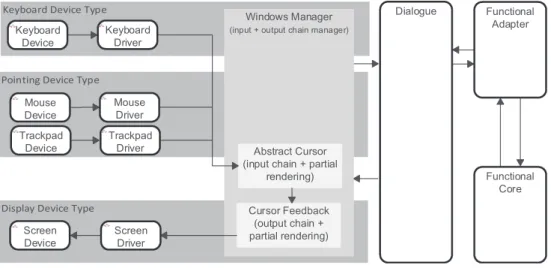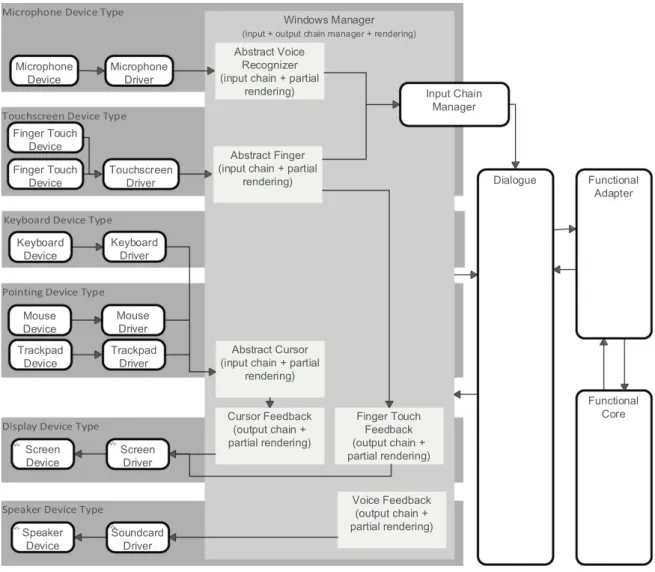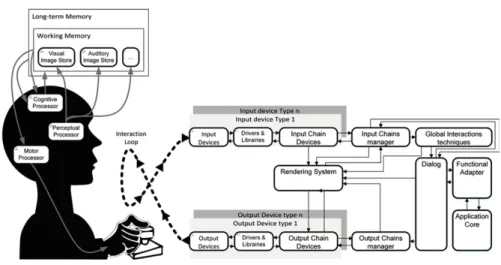Rationalizing the Need of Architecture-Driven Testing of Interactive Systems
Texte intégral
Figure

![Fig. 1. Architecture for multimodal interactive systems from [ 15 ]](https://thumb-eu.123doks.com/thumbv2/123doknet/3013445.84636/8.892.129.744.106.434/fig-architecture-multimodal-interactive-systems.webp)
![Fig. 2. The MIODMIT architecture (adapted from [ 14 ])](https://thumb-eu.123doks.com/thumbv2/123doknet/3013445.84636/9.892.185.732.114.384/fig-miodmit-architecture-adapted.webp)

Documents relatifs
The proposed approach is based on the characterization of the class of initial state vectors and control input signals that make the outputs of different continuous
Taken together, these results are in line with the phonetic –phonological–lexical continuity and cascading hypothesis (Besson et al., 2017; Dittinger et al., 2016; Cooper &
To illustrate the theoretical results presented in this article, the OIST approach is applied to the dynamic control of a ball and beam linear model..
Whereas ex- pression mechanisms of synaptic plasticity are well identified today and involve either presynaptic change in neurotransmitter release or post- synaptic change in
physical input devices to the application core (see. 148), however, no description of the output management is provided. As interactions frequently involve both perception and
Note that Λ L 2 is nonempty, as it includes the labelling that assigns undec to all arguments, and since AF is finite there is at least a maximal (w.r.t. Suppose by contradiction that
Unlike the modal logic framework, which usually uses possible world semantics, input/output logic adopts mainly operational semantics: a normative system is conceived in in-
Other three relevant deontic logics based on non possible-world semantics are imperative logic (Hansen, 2008), prioritized default logic (Horty, 2012), and defeasible deontic




![Table 2. Components of the architecture covered by testing techniques [P = Partial coverage, NC = No Coverage]](https://thumb-eu.123doks.com/thumbv2/123doknet/3013445.84636/21.892.130.792.520.693/components-architecture-covered-testing-techniques-partial-coverage-coverage.webp)